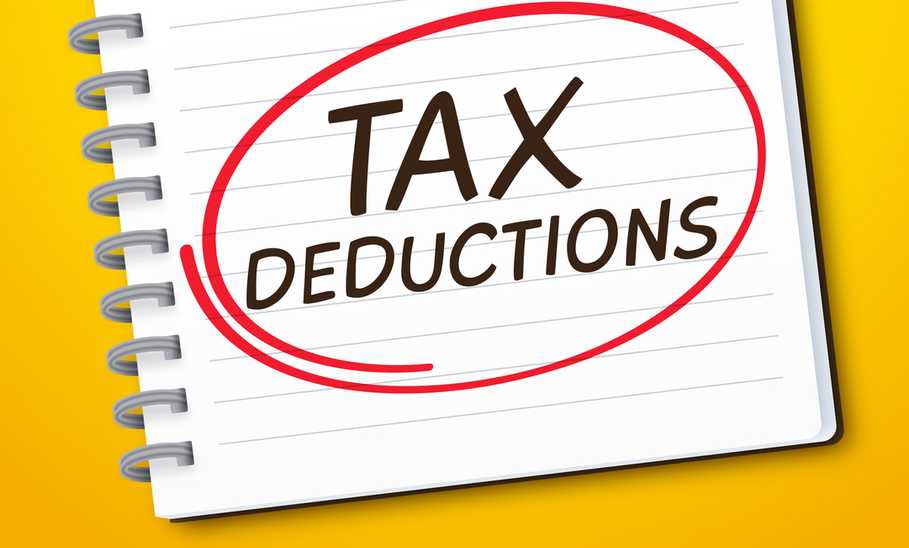What Is the Standard Tax Deduction?

Our evaluations and opinions are not influenced by our advertising relationships, but we may earn a commission from our partners’ links. This content is created by TIME Stamped, under TIME’s direction and produced in accordance with TIME’s editorial guidelines and overseen by TIME’s editorial staff. Learn more about it.
The standard tax deduction lowers your income by a flat dollar amount so you pay fewer taxes. The amount is set by the government and differs depending on your filing status, age, and some special considerations listed below.
As far as the numbers go, the standard deduction for 2023 is $13,850 for single and married filing separately taxpayers, $27,700 for married filing jointly and qualifying widow(er) taxpayers, and $20,800 for head of household taxpayers. Taxpayers older than 65 can add an additional tax deduction for each qualifying member in the household. The IRS also just released the deductions for tax year 2024.
Beyond the actual numbers, there is more to understanding how the standard tax deduction works and when you should use it instead of itemizing deductions.
Free IRS audit defense
Receive your refund up to six days faster than other financial institutions.
After all sources of income are tallied on a tax return, the taxpayer can choose either the standard deduction or file itemized deductions. These deductions lower your taxable income and, when your income is reduced, you pay less tax.
If you don’t owe any tax, deductions will increase your refund amount. That is why tax professionals and taxpayers alike get excited about them. Paying fewer taxes increases the amount of money in your pocket.
Since the standard deduction was nearly doubled in the last overhaul of the tax code, approximately 87% of filers take it. It relieves the onus of deduction paperwork for many taxpayers.
Taking the standard deduction is a choice, so almost everyone qualifies:
There are a few exceptions, which we’ll explain in a section below.
The standard deduction offsets income for taxpayers below a certain income threshold to ensure they don’t pay income tax. It also simplifies filing for the 87% of taxpayers who take the standard deduction.
The standard deduction changes from year to year to account for inflation. The IRS announces the changes for upcoming tax years well in advance.
The standard deduction for tax years 2024 and 2025 are as follows:
| Filing Status | Standard Deduction, 2024 | Standard Deduction, 2025 |
|---|---|---|
Single | $14,600 | $15,000 |
Married filing jointly | $29,200 | $30,000 |
Married filing separately | $14,600 | $15,000 |
Qualifying window(er) | $29,200 | $30,000 |
Head of household | $21,900 | $22,500 |
There are some limitations for your standard deduction if you can be claimed on another taxpayer’s return. In 2024, your standard deduction is limited to the larger of these two amounts:
This is best explained with an example. If you’re a college student who can be claimed by your parents as a dependent, and you earn $15,000 from a part-time job, your standard deduction would fall under the second provision, earned income plus $450 ($15,000 + $450 = $15,450).
However, you’re also limited to the standard deduction for single filers, which is $14,600 for 2024. In this situation, the standard deduction for a dependent would be $14,600. You would owe taxes on the remaining $400 you earned.
(For 2025, the standard-deduction limit figures are $1,350 and $450—and the single filer deduction is $15,000. The student in the example above would owe no taxes.)
People over age 65 by the end of the tax year are allowed an additional deduction amount. So are people suffering from blindness. This amount is added on top of the standard deduction.
| Filing status | Additional deduction amount | Standard deduction | Total deduction |
|---|---|---|---|
Single Filer | |||
Over 65 | $1,950 | $14,600 | $16,550 |
Blind | $1,950 | $14,600 | $16,550 |
Over 65 and blind | $3,900 | $14,600 | $18,500 |
Head of Household | |||
Over 65 | $1,950 | $21,900 | $23,850 |
Blind | $1,950 | $21,900 | $23,850 |
Over 65 and blind | $3,900 | $21,900 | $25,800 |
Married Filing Jointly or Qualifying Widow(er) | |||
Over 65, one spouse or widow(er) | $1,550 | $29,200 | $30,750 |
Blind, one spouse | $1,550 | $29,200 | $30,750 |
Over 65 and blind, one spouse | $3,100 | $29,200 | $32,300 |
Over 65, both spouses | $3,100 | $29,200 | $32,300 |
Over 65, both spouses; one blind | $4,650 | $29,200 | $33,850 |
Over 65 and blind, both spouses | $6,200 | $29,200 | $35,400 |
| Filing status | Additional deduction amount | Standard deduction | Total deduction |
|---|---|---|---|
Single Filer | |||
Over 65 | $2,000 | $15,000 | $17,000 |
Blind | $2,000 | $15,000 | $17,000 |
Over 65 and blind | $4,000 | $15,000 | $19,000 |
Head of Household | |||
Over 65 | $2,000 | $22,500 | $24,500 |
Blind | $2,000 | $22,500 | $24,500 |
Over 65 and blind | $4,000 | $22,500 | $26,500 |
Married Filing Jointly or Qualifying Widow(er) | |||
Over 65, one spouse or widow(er) | $1,600 | $30,000 | $31,600 |
Blind, one spouse | $1,600 | $30,000 | $31,600 |
Over 65 and blind, one spouse | $3,200 | $30,000 | $33,200 |
Over 65, both spouses | $3,200 | $30,000 | $33,200 |
Over 65, both spouses; one blind | $4,800 | $30,000 | $34,800 |
Over 65 and blind, both spouses | $6,400 | $30,000 | $36,400 |
According to data from The Tax Foundation, almost 50%of taxpayers with incomes over $200,000 itemize deductions. Expenses such as mortgage interest, state and local tax deductions, and charitable contributions can help itemizing make sense for these households.
This chart illustrates the percentage of taxpayers who itemize deductions at each income level.
| Taxpayer Income | % Who Itemize Deductions |
|---|---|
Below $10,000 | 0.4% |
$10,000 to $20,000 | 1% |
$20,000 to $30,000 | 1% |
$30,000 to $40,000 | 2% |
$40,000 to $50,000 | 4% |
$50,000 to $75,000 | 8% |
$75,000 to $100,000 | 14% |
$100,000 to $200,000 | 22% |
Over $200,000 | 49% |
Source: The Tax Foundation
There are certain situations when you are not able to take the standard deduction, such as:
The standard deduction changes for the following circumstances:
As noted earlier, an additional deduction applies to the blind, much like those aged 65 and over. The IRS defines blindness in one of two ways:
For 2024, the additional deduction amount is $1,550 ($1,950 for those who are unmarried and not a surviving spouse). In 2025, the amount rises to $1,600 ($2,000 for the spouse-less ).
You can deduct losses from a major disaster (such as a hurricane, wildfire, earthquake, or tornado declared by the president as needing federal assistance) without having to itemize deductions. These losses increase the standard deduction you can take, but be careful with this as the rules are somewhat complicated.
Generally, nonresident aliens are not allowed to take the standard deduction. However, there are some exceptions, such as:
The standard deduction benefits many households. It simplifies the paperwork on your tax return and reduces the amount of time you spend filing taxes. However, it pays to look at it from every angle. If you would still benefit from itemizing deductions, you’ll want to take that road.
Either way, be sure you’re choosing the option that reduces your taxable income the most and keeps more money in your pocket.
You don’t owe any taxes if the standard deduction is more than your income. You may not need to file taxes at all. But if you were employed and tax was taken from your paycheck, you’ll want to file a tax return so you can get a refund.
With a standard deduction, you don’t have to keep track of deductions, but there are 12 types of adjustments allowed to your income that don’t count as deductions. These are:
These adjustments go on line 10 of Form 1040 which are subtracted from income before the standard deduction is taken.
Ensure you have all your information correctly recorded on your tax return. Also consider the income adjustments listed above as you can take these in addition to the standard deduction.
The information presented here is created by TIME Stamped and overseen by TIME editorial staff. To learn more, see our About Us page.




